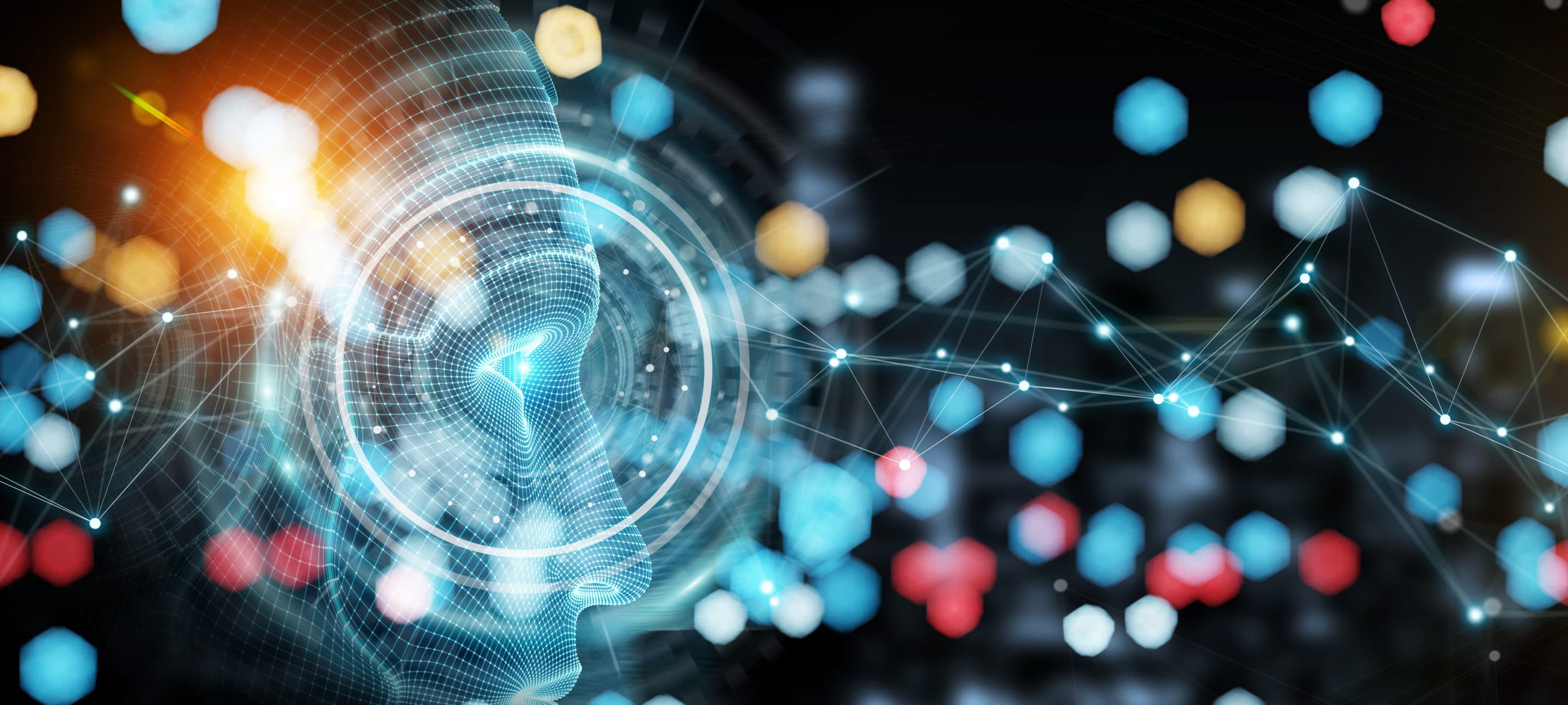
In the past few years, more data has been produced than in the millennia of human history before. This data represents a gold mine in terms of commercial value and also important reference material for policy makers. But much of this value will stay untapped — or, worse, be misinterpreted — as long as the tools necessary for processing the staggering amount of information remain unavailable.
In this article, we’ll look at how machine learning can give us insight into patterns in this sea of big data and extract key pieces of information hidden in it.
What is Machine Learning?
The core of machine learning consists of self-learning algorithms that evolve by continuously improving at their assigned task. When structured correctly and fed proper data, these algorithms eventually produce results in the contexts of pattern recognition and predictive modeling.
For machine-learning algorithms, data is like exercise: the more the better. Algorithms fine-tune themselves with the data they train on in the same way Olympic athletes hone their bodies and skills by training every day.
Many programming languages work with machine learning, including Python, R, Java, JavaScript and Scala. Python is the preferred choice for many developers because of its TensorFlow library, which offers a comprehensive ecosystem of machine-learning tools. If you’d like to practice coding on an actual algorithm, check out our article on machine learning with Python.
What is Big Data?
Data consists of numbers, words, measurements and observations formatted in ways computers can process. Big data refers to vast sets of that data, either structured or unstructured.
The digital era presents a challenge for traditional data-processing software: information becomes available in such volume, velocity and variety that it ends up outpacing human-centered computation. And we can describe big data using these three “V”s: volume, velocity and variety. Volume refers to the scale of available data; velocity is the speed with which data is accumulated; variety refers to the different sources it comes from.
Two other Vs are often added to the aforementioned three: Veracity refers to the consistency and certainty (or lack thereof) in the sourced data, while value measures the usefulness of the data that’s been extracted from the data received.
Good data analysis requires someone with business acumen, programming knowledge and a comprehensive skill set of math and analytic techniques. But how can a professional armed with traditional techniques sort through millions of credit card scores, or billions of social media interactions? That’s where machine learning comes in.
Big Data Meets Machine Learning
Machine-learning algorithms become more effective as the size of training datasets grows. So when combining big data with machine learning, we benefit twice: the algorithms help us keep up with the continuous influx of data, while the volume and variety of the same data feeds the algorithms and helps them grow.
Let’s look at how this integration process might work:
By feeding big data to a machine-learning algorithm, we might expect to see defined and analyzed results, like hidden patterns and analytics, that can assist in predictive modeling.
For some companies, these algorithms might automate processes that were previously human-centered. But more often than not, a company will review the algorithm’s findings and search them for valuable insights that might guide business operations.
Here’s where people come back into the picture. While AI and data analytics run on computers that outperform humans by a vast margin, they lack certain decision-making abilities. Computers have yet to replicate many characteristics inherent to humans, such as critical thinking, intention and the ability to use holistic approaches. Without an expert to provide the right data, the value of algorithm-generated results diminishes, and without an expert to interpret its output, suggestions made by an algorithm may compromise company decisions.
Machine Learning Applications for Big Data
Let’s look at some real-life examples that demonstrate how big data and machine learning can work together.
Cloud Networks
A research firm has a large amount of medical data it wants to study, but in order to do so on-premises it needs servers, online storage, networking and security assets, all of which adds up to an unreasonable expense. Instead, the firm decides to invest in Amazon EMR, a cloud service that offers data-analysis models within a managed framework.
Machine-learning models of this sort include GPU-accelerated image recognition and text classification. These algorithms don’t learn once they are deployed, so they can be distributed and supported by a content-delivery network (CDN). Check out LiveRamp’s detailed outline describing the migration of a big-data environment to the cloud.
Web Scraping
Let’s imagine that a manufacturer of kitchen appliances learns about market tendencies and customer-satisfaction trends from a retailer’s quarterly reports. In their desire to find out what the reports might have left out, the manufacturer decides to web-scrape the enormous amount of existing data that pertains to online customer feedback and product reviews. By aggregating this data and feeding it to a deep-learning model, the manufacturer learns how to improve and better describe its products, resulting in increased sales.
While web scraping generates a huge amount of data, it’s worthwhile to note that choosing the sources for this data is the most important part of the process. Check out this IT Svit guid for some best data-mining practices.
Mixed-Initiative Systems
The recommendation system that suggests titles on your Netflix homepage employs collaborative filtering: It uses big data to track your history (and everyone else’s) and machine-learning algorithms to decide what it should recommend next. This example demonstrates how big data and machine learning intersect in the arena of mixed-initiative systems, or human-computer interactions, whose results come from humans and/or machines taking initiative.
Similarly, smart-car manufacturers implement big data and machine learning in the predictive-analytics systems that run their products. Tesla cars, for example, communicate with their drivers and respond to external stimuli by using data to make algorithm-based decisions.
What to Keep in Mind
Achieving accurate results from machine learning has a few prerequisites. Apart from a well-built learning algorithm, you need clean data, scalable tools and a clear idea of what you want to achieve. While some might see these requirements as obstacles preventing their business from reaping the benefits of using big data with machine learning, in fact any business wishing to correctly implement this technology should invest in them.
Data Hygiene
Just as training for a sport can become dangerous for injury-prone athletes, learning from unsanitized or incorrect data can get expensive. Incorrectly trained algorithms produce results that will incur costs for a company and not save on them, as discussed in the article Towards Data Science. Because mislabeled, missing or irrelevant data can impact the accuracy of your algorithm, you must be able to attest to the quality and completeness of your data sets as well as their sources.
Practicing with Real Data
Suppose you want to create a machine-learning algorithm but lack the massive amount of data required to train it. You hear somewhere that derived computed data could be substituted for real data you generated. But beware: Because an ideal algorithm should solve a specific problem, it needs a specific type of data to learn from. Derived data rarely mimics the real data the algorithm needs to solve the problem, so using it almost guarantees that the trained algorithm will not fulfill its potential. Experimenting with real data offers the safest path.
Knowing What You Want to Achieve
Don’t let the hype around integrating machine learning with big data end up catapulting you into a poor understanding of the problem you want to solve. If you’ve pinpointed a complex problem but don’t know how to use your data to solve it, you could wind up feeding inappropriate data to your algorithm or using correct data in inaccurate ways. To harness the power of big data, we recommend taking the time needed to create your own data before diving into an algorithm. That way you can educate yourself about your data, so when the time comes, you can use (and train) an algorithm appropriate to your problem.
Scaling Tools
Big data gives us access to more information, and machine learning increases our problem-solving capacity. Put together, the two present opportunities to scale entire businesses. To take advantage of this, we should also prepare our other tools (in the realms of finance, communication, etc.) for scaling.
Summary
In this article, we discussed the usefulness of applying machine learning to big data analysis. By programming machines to interpret data too vast for humans to process alone, we can make decisions based on more accurate insights.
We also touched on some applications that use big data with machine learning and some things to keep in mind when beginning this process. If you’re interested in becoming a machine learning engineer, check out this course by Udacity.




